Larson was drafted by the Minnesota Fighting Saints of the WHA and the Detroit Red Wings of the NHL, and following his final college game in 1977, he joined the Red Wings for the final 14 games of their schedule.
He began a run of nine seasons with 75 or more games played in 1977-78. Larson impressed that season with a stout 19 goals and 60 points. In 1978-79 he virtually duplicated that effort with 18 goals and 67 points as well as a career high 169 penalty minutes. He broke the 20 goal mark for the first time in 1979-80 with 22 goals on his way to 66 points. That was immediately followed in 1980-81 when Larson set a career high with 27 goals along with 58 assists and 153 penalty minutes. Additionally, Larson was named captain of the Red Wings that season.
Following the season, Larson made his only World Championship appearance when he skated for the United States at the 1981 Worlds, scoring 5 goals and 6 points in 8 games. Later than fall, he again answered the call for the United States as a member of their Canada Cup team, contributing a goal and an assist in 5 games.
From 1981-82 through 1983-84 Larson continued his run of 20 goals or more with 21, 22 and 23 goals, highlighted by his 1982-83 season when he set career highs with 52 assists and 74 points from the blueline.
Larson played 67 games of the 1985-86 season for the Red Wings until being traded to the Boston Bruins in March of 1986 for the final 13 games of the season.
He added another 12 goals to his career total in 1986-87, including scoring two goals on this date in 1987 to become the sixth defenseman and first American in NHL history to score 200 career goals in a 6-4 Bruins win over the Hartford Whalers.
In 1987-88, Larson played 62 games for the Bruins, scoring another 10 goals and 34 points. He also played the first minor league games of his entire career when he played two games for the Maine Mariners of the AHL on a conditioning assignment.
At this point the previous stability of Larson's career (12 seasons with two Original 6 clubs) came to and end and the nomadic phase began. He signed with the Edmonton Oilers as a free agent for the 1988-89 season, which lasted just 10 games. He was released by the Oilers and caught on as a free agent with the New York Islanders. He scored 7 goals and 20 points on Long Island in 33 games before being traded to his hometown Minnesota North Stars for the final 11 games of his well-travelled season.
He travelled even further in 1989-90 when he signed to play with HC Alleghe in Italy as a player-coach, where, in 34 games, Larson scored 17 goals and 49 points. With the shorter Italian season over, Larson returned to North America and signed as a free agent with the Buffalo Sabres, but only appeared in a single game, which would prove to be his last in the NHL.
He returned to Italy with Alleghe for 1990-91, scoring 51 points before joining HC Milano Saima for the 1991-92 season. For the following season, Larson became a member of HC Courmaosta of the Italian Second Division. Thanks to Larson's dominant form, scoring 30 goals and 78 points in 32 games, Courmaosta won promotion to the Italian top division, the Serie A and he moved up with the club, playing in 19 games, scoring 26 points to end the Italian period of his career.
Larson still had one final stop at home before calling it a career, suiting up for nine games for the Minnesota Moose of the IHL during the 1994-95 season before retiring from play.
His final NHL totals were 904 games played with 222 goals and 463 assists for 685 points. Larson also played in three NHL All-Star Games in 1978, 1980 and 1981 and was inducted into the United States Hockey Hall of Fame in 1996.
Today's featured jersey is a 1981-82 Detroit Red Wings Reed Larson jersey as worn during his first year as captain of the Red Wings when he set a career high with 27 goals on his way to becoming the first American to score 200 goals in the NHL.
Detroit adopted this style sweater 1932-33 when they changed their name from the Falcons to the Red Wings. There have been a few detail changes to the number font throughout the decades and the position of the white waist stripe, as well as the additions of sleeve numbers and names on the back, but the jersey has remained essentially unchanged for over 80 years.
This jersey can be dated to the 1981-82 season by the patch on the upper right chest honoring the Norris family's 50 years of ownership of the club.
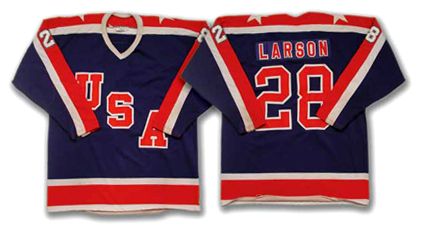
Finally, a brief interview with a jovial Larson at TCF Bank Stadium in advance of the Gophers up coming outdoor game against Ohio State in the 2014 Hockey City Classic.

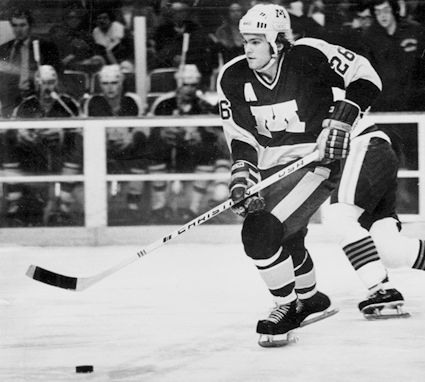
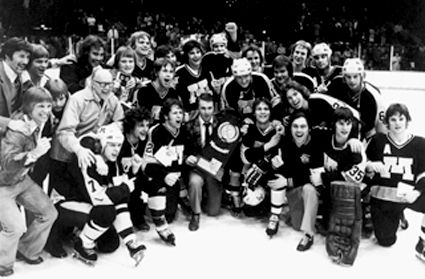
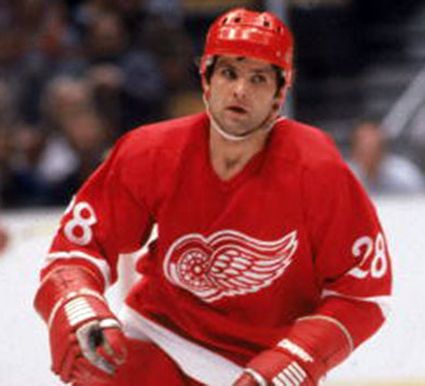
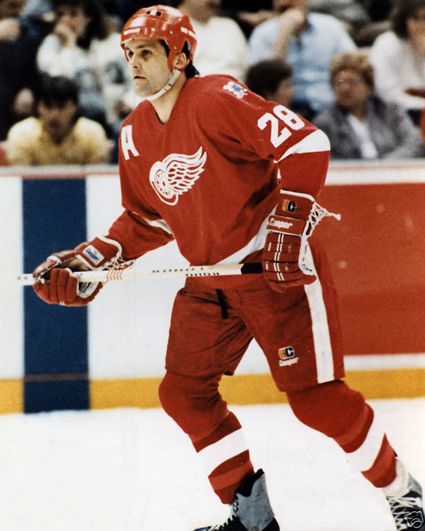
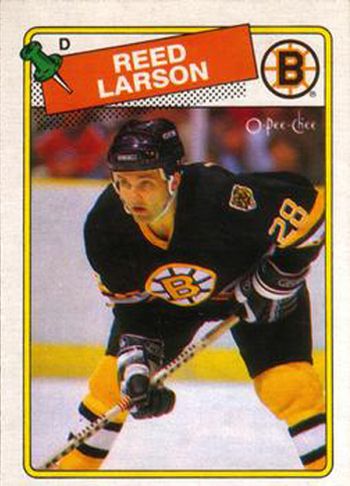
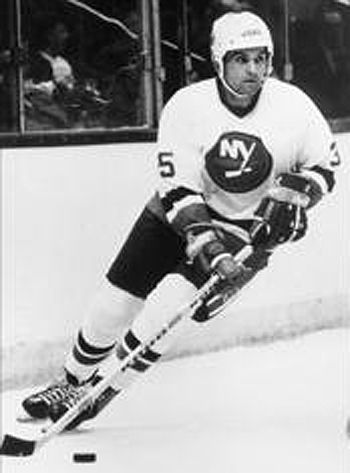
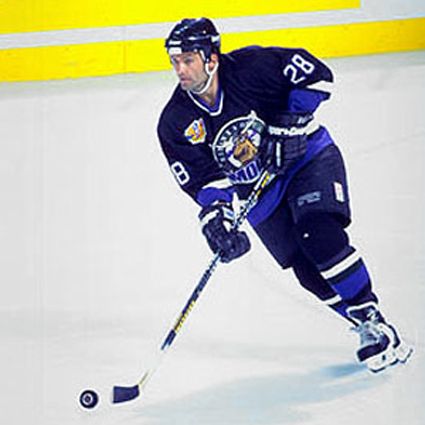











No comments:
Post a Comment
We welcome and encourage genuine comments and corrections from our readers. Please no spam. It will not be approved and never seen.